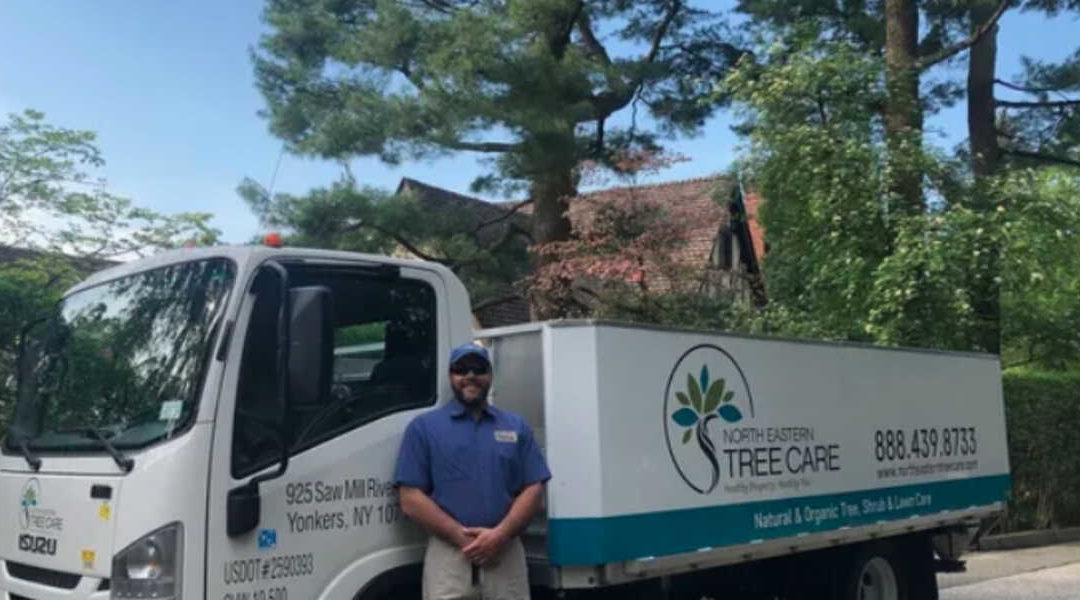When did you last have qualified arborists around for a professional tree inspection? Are they worth the money?
In this post, North Eastern Tree, Shrub, & Lawn Care, Yonkers’ reliable tree care specialists, discuss why it’s good to invest in a tree risk assessment in spring.
Why Schedule an Annual Tree Inspection?
Regular tree inspections are a time-saving strategy for the busy property owner. The arborist runs soil tests and checks for pest infestations, structural damage, and other potential issues before developing a customized strategy.
Think of it like your annual car tune-up in that it heads off significant problems and keeps your trees healthy. Unlike your car, however, it can be difficult to spot signs that your tree is in trouble. The tree won’t keel over and die immediately, making it hard to know it’s in trouble.
Hiring experts for a spring tree inspection saves you time and money because trees grow at such a slow pace. Correcting imbalances or healing a tree can take a few seasons, so it’s best to root out issues as early on as possible. Experts know what to look for and can identify signs of trouble.
Spring is the best time to plant trees, so it makes to schedule the inspection at this time.
What Happens During a Tree Inspection?
During an inspection, the arborist will carefully:
- Evaluate the tree’s structure and health
- Test the soil
- Look for signs of disease and pest infestation
- Check the bark, leaves, branches, and roots
The Benefits of an Annual Inspection
Annual tree inspections are highly beneficial for property owners. Here’s why:
Early Diagnosis
It’s always better to catch tree diseases or pest infestations earlier rather than later. Unfortunately, unless you know what to look for, you can easily miss the signs.
An arborist identifies the early stages of stress and finds the root cause. They then come up with a scientific strategy to counteract the problem based on their expertise and experience.
The benefit is that they will approach the issue from several points. Instead of just spraying poison on termites, for example, they will also bolster the tree’s health. This, and early treatment, improves the chance of a full recovery and stops the infection or infestation from spreading.
Identify Structural Damage
Sometimes structural damage is obvious, but not always. If you’re lucky, you’ll see the tree starting to lean before it falls. If not, there might be a small ground disturbance as the roots begin to lift and no other sign.
Other damage is more insidious. A lightning strike, for example, might not show outward signs initially but can kill the tree. You might only notice when the leaves drop off.
Better Safety
Improving safety is one of the most important reasons for conducting an annual tree inspection. An arborist can identify weak limbs that are likely to break. This, in turn, prevents property damage and can stop heavy branches from falling onto people or pets.
Watering Adjustments
Conventional wisdom states that you don’t have to water an established tree unless there’s a drought. There are, however, times when this rule doesn’t apply, particularly when the tree is stressed. A professional will check factors like the tree species, micro-climate, and several other things to determine if you need to water the plant.
Adequate Fertilization
Some trees feed heavily, while others thrive on neglect. Consulting an arborist takes away all the guesswork by checking the soil for nutrients and then advising you on what to add to meet your goals.
Contact Us for Expert Advice
Ready to schedule a tree inspection with North Eastern Tree, Shrub, & Lawn Care or find out where trees get their nutrients? Call (888) 439-8733 to get started.



